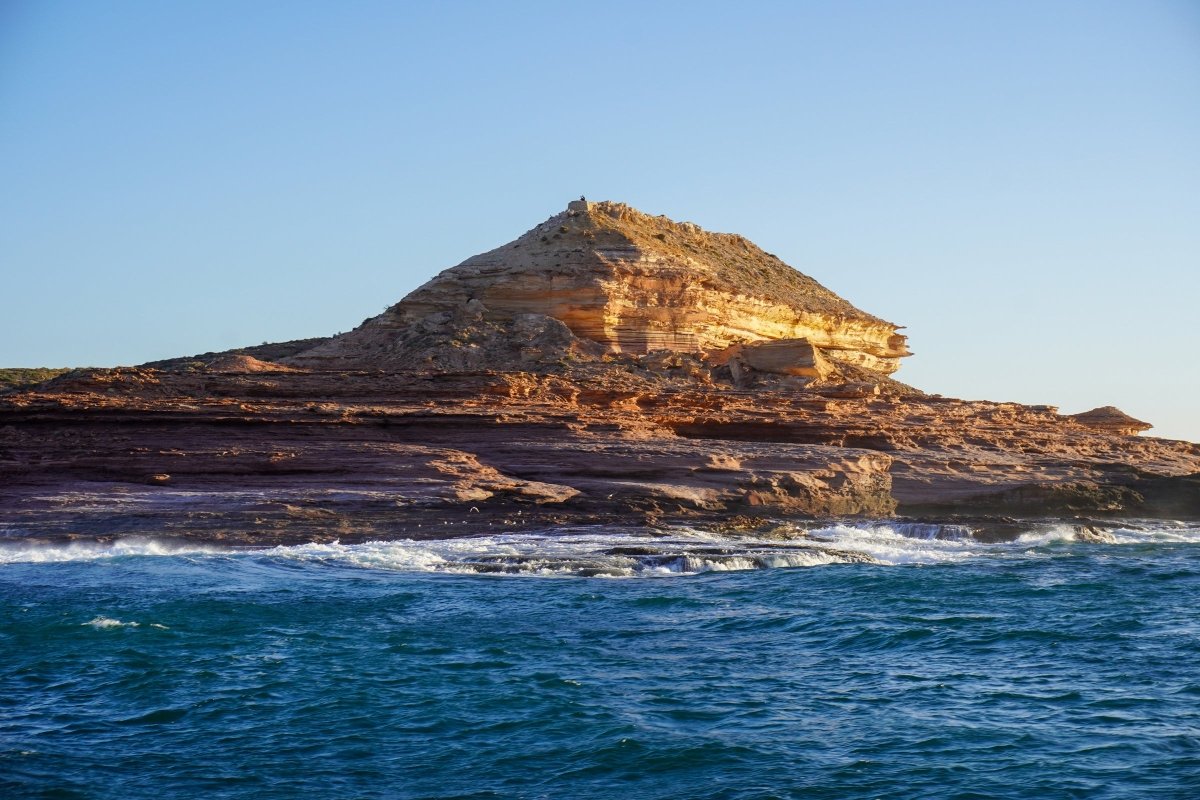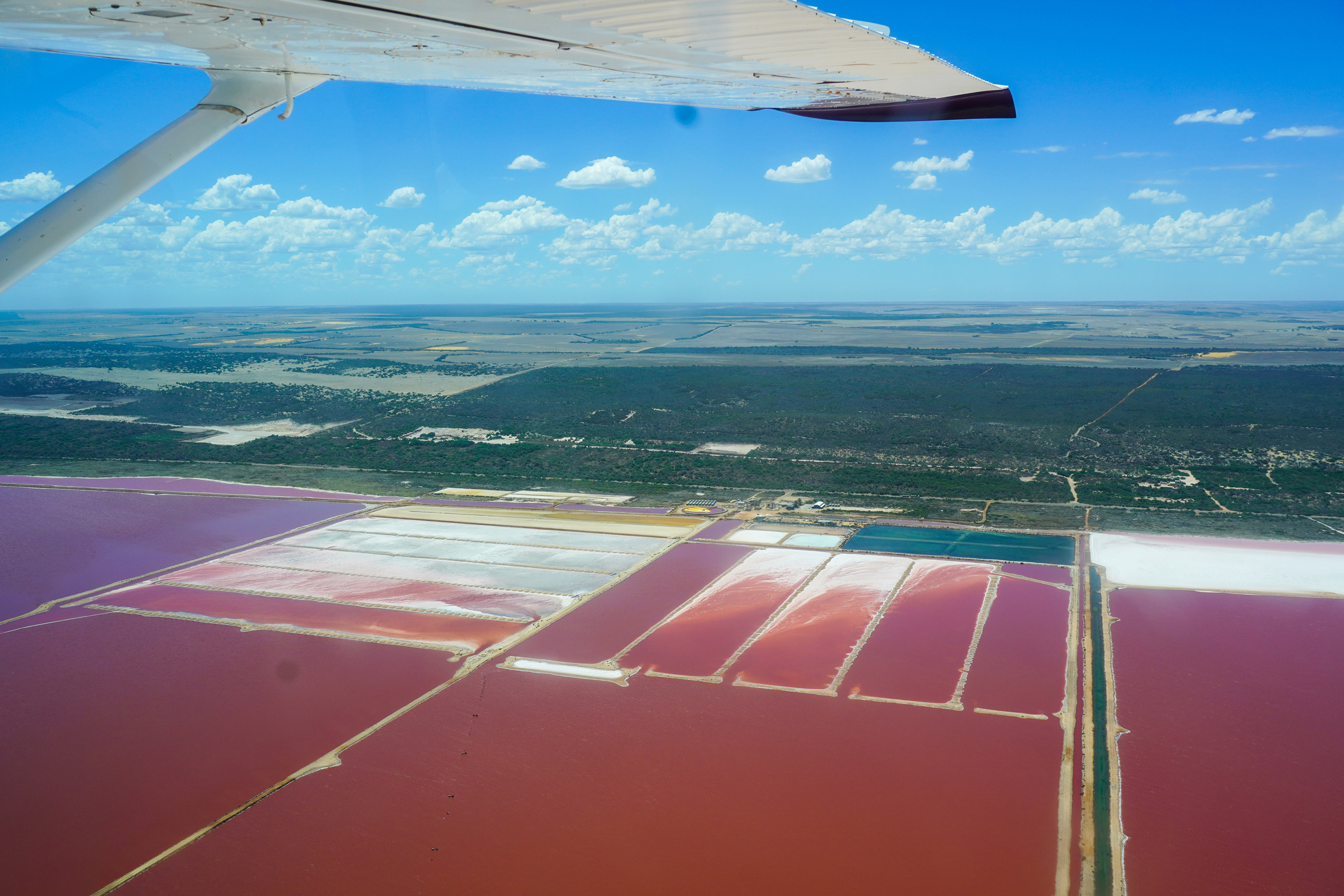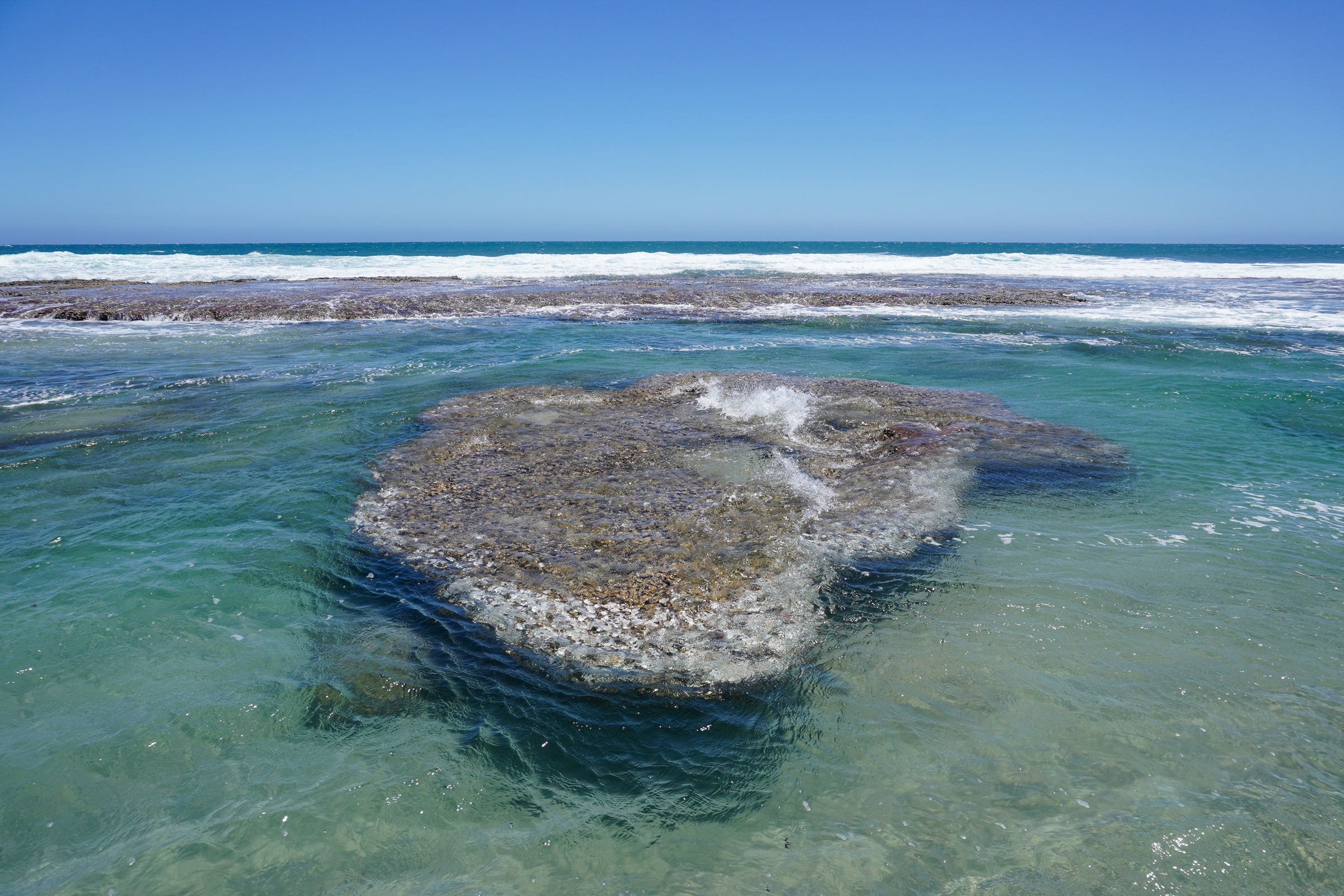Kalbarri Calling

Western Australia’s Kalbarri may have been in the making for over 400 million years, but only recently did it receive a wild makeover. In early 2021, the coastal town of 1350 was severely affected by tropical cyclone Seroja. Kalbarri and neighbouring town Northampton were caught up in the cyclone’s path of destruction across the state’s mid-west region. Seventy per cent of buildings were either damaged or devasted in each town.
But yesterday’s gloom does not mean Kalbarri is doomed.
Slowly but surely, Kalbarri is rising from ruin. Located 570km north of Perth, the popular resort town remains one of the state’s top family-friendly destinations. And although it may currently lack places to wine and dine as a result of cyclone damage, the town’s true zest is found outdoors, with a wealth of nature-based activities found on its rugged doorstep.
50 SHADES OF RED
Arriving in Kalbarri was almost akin to entering a boiler room. It was hot! And the intense, dry heat almost knocked my dad and me out. (If you can, it’s best to plan your visit to Kalbarri in winter when the weather is much more tolerable.) But while I may have been a hot mess stepping out of the comforts of an air-conditioned car, there was no hiding how excited I was about working up a sweat on my own accord in this scenic playground.
Kalbarri is located on Yamaji country with the land’s traditional owners, the Nanda people. The sleepy town rests along the edge of the Murchison River, its mouth drooling into the Indian Ocean.
A postcard-destination, Kalbarri sits between two contrasting landscapes despite sharing the same red hue — Kalbarri National Park’s striking 400-million-year-old Tumblagooda sandstone banded gorges located 35km inland, and the parks’ towering Coastal Cliffs that plunge into the deep blue.
Joining Kalbarri’s red-hot lineup is its prized crustacean: western rock lobster (crayfish). Kalbarri boasts a healthy crayfish industry with the tasty ‘cockroaches of the sea’ found in abundance.
Local tour operator Reefwalker offers rock lobster pot pull tours that pay for themselves — that’s if you’re happy to be paid back in edible currency.
After leaving the peaceful confines of the Murchison River, waves soon swirled like a washing machine on a spin cycle as we made our way around the headland to pull the first of 12 pots.
“Who here likes gambling?” local tour guide, Aydan, enthusiastically asked the dozen of us on board the charter wanting an insight into catching crays, one of Aydan’s sources of income.
We were encouraged to place our bets on how many lobsters would be found in each pot. With each pull, we enthusiastically shouted numbers “5!”, “8!”, with optimistic (or very hungry) folk screaming out “10!”, “12!”
Between the manic bingo calls, there was another frenzied sight — sharks. Bronzed whalers soon edged closer to the boat to get in on the action. They were ravenous. We could clearly see their chaotic movements underwater every time undersized crayfish or old fish scraps from the pots were thrown back into the ocean. The gun-metal vultures showed no mercy, quickly snapping up an easy feed. Their short-lived, competitive hunts made for a thrilling spectacle suited to a Nat Geo doco.
Thankfully, we humans didn’t have to be so savage for our next meal.
Each person on board scored jackpot, with 40 crays caught out of a possible 80 (the legal number for tourist charters).
“You got breakfast, lunch and dinner,” Aydan remarked as he each gave us our goodie bag of three crays as we departed. With the level of excitement experienced, I like to think it was a diet that we were all only too happy to sink our teeth into — sorry sharks.

A VIEW FROM THE TOP
The main drawcard to Kalbarri is undoubtedly visiting Kalbarri National Park. The park spans over 186,000 hectares and is regarded as one of WA’s most picturesque.
A new way to experience part of the 80km-long Murchison River gorge in Kalbarri’s latest tourist drawcard at the inyaka wookai watju site, also known as the West Loop Lookout. The Kalbarri Skywalk comprises twin skywalks hovering beyond the gorge’s rim and looming over 100m above the Murchison River.
It’s like walking on air — almost. Even those afraid of heights would be tempted to tiptoe the plane-wing-shaped platforms to enjoy the spectacular views the new attraction affords. From above, the gorge’s exposed molten bands jutted out like an uneven pancake stack. Trees below resembled green broccoli and the river reminiscent of a thin black snake trailing the gorge’s winding ways. The ancient landscape is nothing short of impressive and is a perfect place to appreciate the forces of nature over millions of years.
Another viewpoint to check out is Nature’s Window along The Loop Trail. Thanks to wind-erosion, this natural picture frame provides stunning vistas of the park through its layered sandstone opening.
To reach the much-loved photo-op spot, it’s a moderate one-kilometre return walk and a bit of careful trotting on rocky terrain. It was surprising to realise that we had it all ourselves when we arrived as the charming periphery is usually heaving with tourists. Granted, the sun was beating down, so the winds channelling through the window as we posed for photographs was a much-welcomed respite.
Other lookouts within the park include Z Bend, Hawks Head and Ross Graham — that’s if you can’t get enough of the gorgeous scenery (if you get my drift).
But on the opposing end of the park is WA’s natural red rope boundary. At golden hour, the Coastal Cliffs mirror the red-rust gorges inland, plunging more than 100 metres into the ocean.
We hopped back on Aydan’s boat to take in the beauty of the cliffs on board a sunset cruise. Sailing in the shadows of the cliffs while the sun slowly called it a day was simply magical. The cliffs lost their intensity as the sky morphed into soft blue/pink/orange/purple pastels.
During the 90-minute sail, Aydan pointed out sights along the coast – the pyramid-shaped Red Bluff, Blowholes Beach, Mushroom Rock, Island Rock, Pot Alley, Natural Bridge, to name a few. The 180-degree view of Kalbarri did not disappoint.
WET AND WILD
From seeing Kalbarri’s famous drops, it was time to get to the bottom of it.
Kalbarri Adventure Tours has been operated by local husband and wife duo Davo and Helen for over 23 years. They prove why it’s worth paying for guidance by offering hiking and canoe tours within the gorge, following paths not listed on the park’s trails.
For Helen, it’s all about earning the rewards after an outback workout.
“My thing is to go for a hike and end up somewhere I can go swimming.”
Helen’s offbeat track to the gorge’s floor is no Sunday stroll. The walk down requires careful footwork on rough grounds. It is recommended for people confident in their physical ability and body pull as a bit of rock climbing is involved.
Looking up at the gorges, it felt like an introductory experience to pre-visiting Australia’s north-west.
“You don’t have to go to Pilbara or the Kimberley,” Helen said as we gazed at the ancient formations that loomed over us and reflected on glassy water. Verdant trees added pops of colour to the dominant red landscape. It’s true, this dramatic wilderness setting was all kinds of wow.
It was only just the two of us in this all-encompassing setting. Oh, and the family of blank-flanked wallabies hiding stories high in nooks, coots, and a lonesome Pied Cormorant trailblazing over our heads as it made its way through the gorge, so really, we were in good company.
We soon hit the water to paddle our way along the Murchison River via a canoe. The setting was so still with the only sounds of disturbance the odd bird call from afar and the splash of our oars.
A quick dip in the river was the ultimate cherry on top before trailing ravines and rock climbing out of the gorge to head back to civilisation.

PRETTY IN PINK
Out with the reds and in with the pinks — a whole lot of pink.
Hutt Lagoon is another famed spot in the region, just 55km south of Kalbarri. Widely known as ‘Pink Lake’, it draws a crowd for its unique pink lustre caused by high-level levels of salinity. The intensity of its unusual hue depends on when you visit it (mid-morning and sunset are best). However, there is a big difference between seeing it from the side of the road and the air.
Local charter Kalbarri Scenic Flights provides the ultimate vantage point to see the lake and other regional marvels — the Abrolhos Islands, Murchison River Gorge, and Coastal Cliffs — all in one go. How’s that for a joy ride over a rainbow on earth?
Seeing Hutt Lagoon’s Barbie-pink waters from above was an extraordinary sight, the ultimate Kalbarri VIP (Very Intense Pink) experience. The Indian Ocean’s blues provided a spectacular contrast to the patchwork of hues observed in the lake — blood orange, white and peach — each separated by roads. The colourful landscape looked like an expansive colour palette. Incredible.
Back on earth, we headed to Kalbarri institution Finlay’s for a last hurrah. The former ice works cum outdoor restaurant and brewery has been around for three decades and was one of the lucky businesses to have survived the pandemic and the aftermath of cyclone Seroja.
Fairy lights strung across the outdoor seating area added a special country charm, as did the eucalyptus trees, and retired machinery dotting the scene. A wooden boat on top of the toilet block roof too added an extra quirk to the place.
But besides its trendy interior (or exterior) design, the food and drink were equally impressive. Pairing speciality brew aptly named nature’s window wheat beer with locally caught Robinson’s seabream soft tacos showcased Kalbarri’s gourmet pull. In addition to the main event — a creamy tomato seafood linguine heaped with seabream, Exmouth tiger prawns and Shark Bay cockles – my kind of potluck.
The splurge tasted even better knowing that I was throwing my support – and fork – behind a local business aiding Kalbarri’s recovery. And this time around, I’m not sorry.
FAST FACTS
GETTING THERE
Kalbarri is about 575km north-west of Perth, a six to seven-hour drive. There is a coastal route and a more inland route, based off what you would rather see.
INFORMATION
Reefwalker
Ph: 0417 931 091
E: reefwalker@wn.com.au
W: reefwalker.com.au
Kalbarri Adventure Tours
Ph: 9937 1677
E: kalcanoe@wn.com.au
W: kalbarritours.com.au







